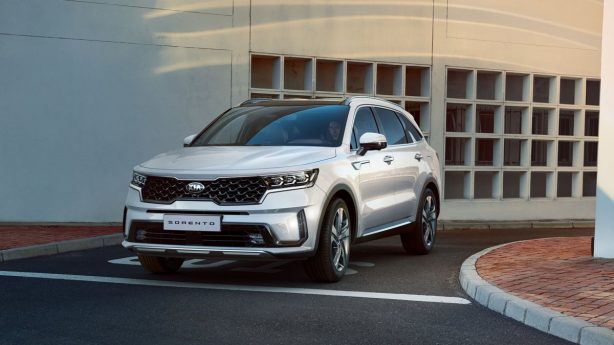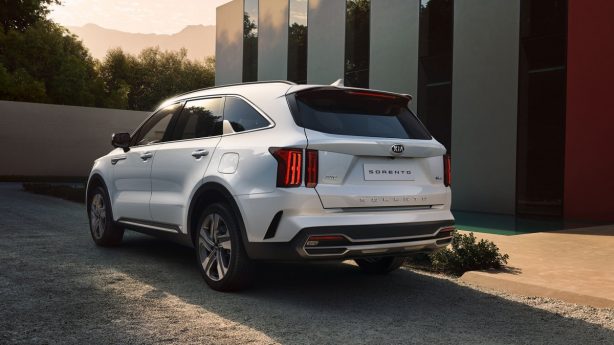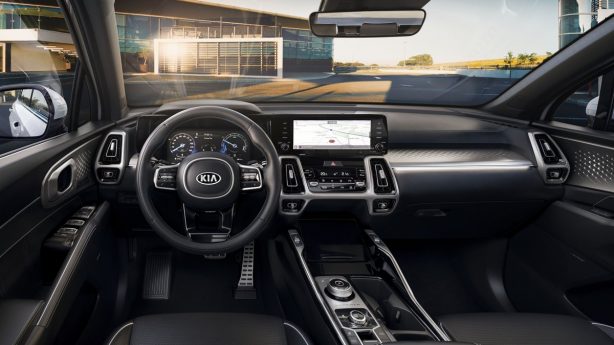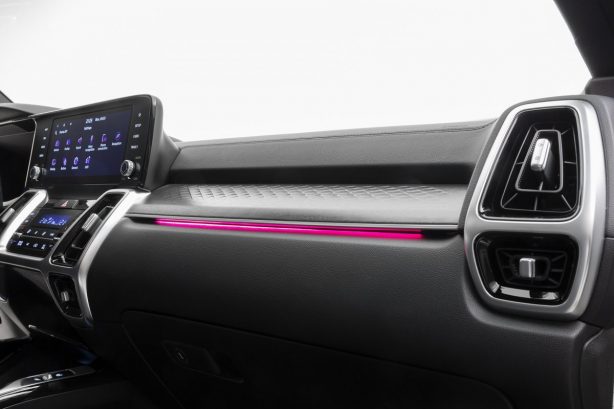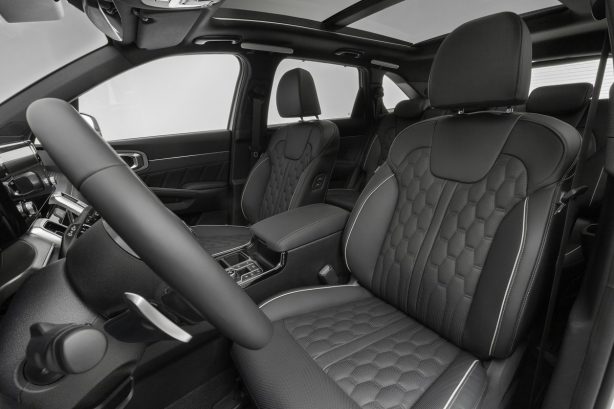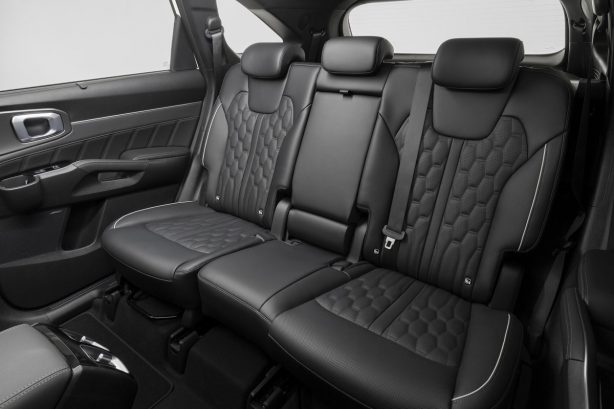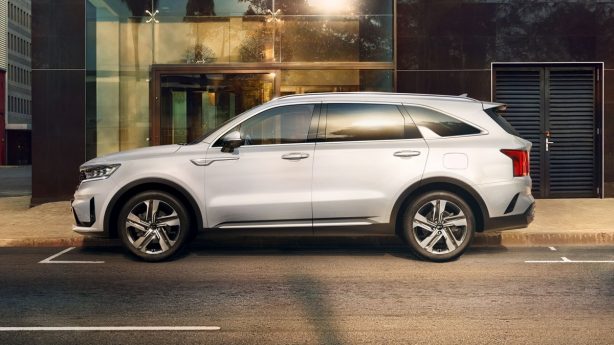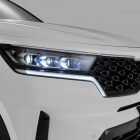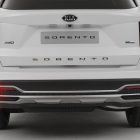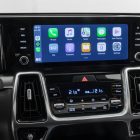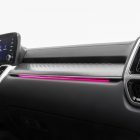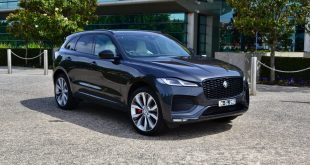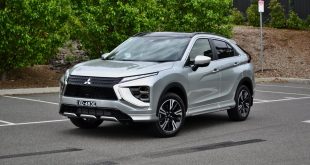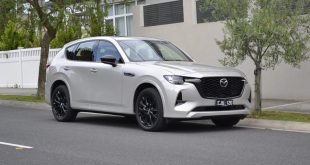The new fourth-generation Sorento is the flagship for Kia’s reinvigorated global SUV line-up, alongside the Seltos and Sportage. The new model is the result of a collaborative design effort between all three studios within Kia’s worldwide design network, in Korea, Europe and North America.
Design
The front of the new Sorento evolves with a new interpretation of Kia’s ‘tiger nose’ grille, displaying a wider shape which wraps around the integrated headlamps on each side. The headlamps themselves feature a new ‘tiger eye’ LED daytime running light.
This sharper, more assertive appearance is complemented by a wide, rectangular lower air intake, bookended by wing-shaped air curtains to channel air around the car. A sharp bumper lip is also capped with a skid plate, enhancing its robust appearance.
At the rear the Sorento adopts new vertical tail lamps which wrap around the side of the body. Trim on the lower rear bumper mimics the appearance of dual tailpipes and, like the front, features a skid plate to add to its tough SUV aesthetic.
The new model is 1900 mm wide and 4810 mm long, 10 mm wider and 10 mm longer than the previous model. Despite being longer, it features shorter front and rear overhangs. The additional length is found in the wheelbase (a result of the Sorento’s new platform), which has grown by 35 mm to 2,815 mm.
The new Sorento will be available in Australia with a choice of seven exterior paint finishes Europe with a choice of 10 paint finishes, and 17-, 18-, 19- and 20-inch aluminium alloy wheels, depending on trim grade.
Interior
The interior of the fourth-generation Sorento represents a step-change in quality and design for Kia cabins. One of the highest quality interior spaces found in any Kia to-date, the intuitive, tech-oriented cabin of the new Sorento is fitted with premium-quality materials and a new infotainment system.
The 12.3-inch digital driver instrument cluster is twinned with a 10.25-inch touchscreen infotainment and navigation system at the centre of the dashboard, presenting information within the driver’s line of sight, and create an innovative wide-screen user experience.
The car’s many functions can also be controlled with new haptic buttons on either side of the screen, which also feature further down the dashboard for the climate control system. The focal point of the dashboard is the vertical ventilation stack, with a chrome-effect surround that extends onto the centre console below.
The cabin of the new Sorento subtly integrates a range of other technologies, including an available Mood Lighting system. A wireless smartphone charger also sits at the base of the centre console, while a powerful BOSE surround-sound system is also available to provide a more immersive in-car audio experience.
Material quality is enhanced, with a cabin that blends metallic trim, leather upholstery, and embossed satin-effect surfaces. In Australia the Sorento will be available (grade dependent) with embossed black cloth, leather appointed black cloth and black quilted Nappa leather.
Practicality
The new Sorento is based on Kia’s new third-generation ‘N3’ midsize SUV platform. The structure and layout of the new platform means the Sorento is able to accommodate electrified powertrains for the first time.
The new platform is based around a compact engine bay structure and shorter front and rear overhangs, with a 35 mm longer wheelbase creating greater cabin space between the axles.
The Sorento Hybrid’s battery pack is located under the floor of the cabin, beneath the front passenger rather than the boot floor. As a result, the SUV offers generous space for up to seven passengers as well as one of the largest luggage capacities in its class – up to 821 litres (for seven-seat models) or 910 litres (for five-seat models), depending on specification.
Aided by the platform’s longer wheelbase, the second-row seats now slide up to 45 mm further, creating a wider point of entry to the third row with more space for feet and legs. There is also a new grab handle built into the interior trim inside the C-pillar, giving third-row passengers something to hold on to as they climb aboard.
Once seated, the third-row armrest has also been extended by 100 mm for greater elbow support, while incorporating a cupholder and smartphone tray.
Powertrain
Kia’s newest SUV will be available with hybrid power – a first for a Sorento – and buyers will eventually able to choose from hybrid or plug-in hybrid variants.
The Sorento Hybrid is powered by a new electrified powertrain, pairing a 1.6-litre T-GDi (turbocharged gasoline direct injection) with a 1.49 kWh lithium-ion polymer battery pack and 44.2 kW electric motor. Clever packaging of the Sorento’s new platform means the battery pack can be located under the floor beneath the front passenger, with minimal impact on cabin or luggage space.
Producing a combined output of 169 kW and 350 Nm of torque, the hybrid powertrain drives through a six-speed automatic transmission and is paired with either front- or all-wheel drive.
The Sorento Hybrid will go on-sale in select European markets from launch, with others to follow later in 2020. The new Sorento will also be available as a Plug-in Hybrid variant from late in 2020.
The Sorento’s new four-cylinder 2.2-litre diesel engine is also available, producing 148kW and 440 Nm of torque. With a new aluminium block replacing the cast iron block of its predecessor, the new engine is 19.5 kg lighter compared to that found in the previous Sorento. It’s paired with Kia’s new eight-speed wet double-clutch transmission (8DCT). Designed to offer the smooth shifting characteristics of a conventional automatic, the 8DCT enhances fuel efficiency over a conventional eight-speed automatic by around 2 to 3%, depending on application.
New for the fourth generation, the latest Sorento model offers enhanced all-terrain capability over its forebears thanks to a new Terrain Mode. Paired with the optional all-wheel drive system, Terrain Mode makes the Sorento more capable in mud, snow and sand.
With each mode selectable from a dial on the centre console, Terrain Mode carefully controls the car’s standard electronic stability control (ESC), as well as the distribution of torque to all four wheels. It also adapts transmission shift times to help the car find and maintain traction in a range of driving environments.
Safety
Depending on specification, the Advanced Driver Assistance Systems (ADAS) range in the new Sorento includes Kia’s latest Forward Collision-avoidance Assist (FCA) technology with pedestrian, cyclist and vehicle detection. This also detects oncoming traffic when making a turn at a junction. The Sorento is also available with Blind-spot View Monitor (BVM), Surround View Monitor (SVM) and Blind-spot Collision-avoid Assist (BCA), Intelligent Speed Limit Assist (ISLA), Smart Cruise Control with Stop&Go (SCC) and Navigation-based SCC (NSCC), Lane Following Assist (LFA), Driver Attention Warning (DAW), and Highway Driving Assist (HDA).
Powertrain Details
Diesel
2.2-litre / 148kW ‘Smartstream’ CRDi diesel
Type Four cylinder turbocharged in-line
Capacity 2.2-litres, 2151 cc
Bore and stroke 83.0 x 99.4
Compression ratio 16.0:1
Max power 148 kW @ 3800 rpm
Max torque 440 Nm @ 1750-2750 rpm
Valves 16 (four per cylinder)
Fuel system Common rail direct injection
Hybrid
1.6-litre / 132kW ‘Smartstream’ T-GDi hybrid
Type Four cylinder turbocharged in-line
Capacity 1.6-litres, 1598 cc
Bore and stroke 75.6 x 89.0
Compression ratio 10.5:1
Max power 132 kW @ 5500 rpm (engine only)
Max torque 265 Nm @ 1500-4500 rpm (engine only)
Valves 16 (four per cylinder)
Fuel system Gasoline direct injection
Battery and electric motor
Battery type Lithium-ion polymer
Battery voltage 270 V
Battery energy 1.49 kWh
Max power (motor) 44.2 kW @ 1600-2000 rpm (motor only)
Max torque (motor) 264 Nm @ 0-1600 rpm (motor only)
Combined hybrid system
Total power 169 kW
Total torque 350 Nm
Transmissions
Diesel: Eight-speed double-clutch transmission (8DCT)
Hybrid: Six-speed automatic transmission (6AT)
Drivetrains
Standard Front wheel drive (FWD)
Option All-wheel drive (AWD)
 ForceGT.com Car News, Car Reviews, Video Reviews, Tuning and much more.
ForceGT.com Car News, Car Reviews, Video Reviews, Tuning and much more. 